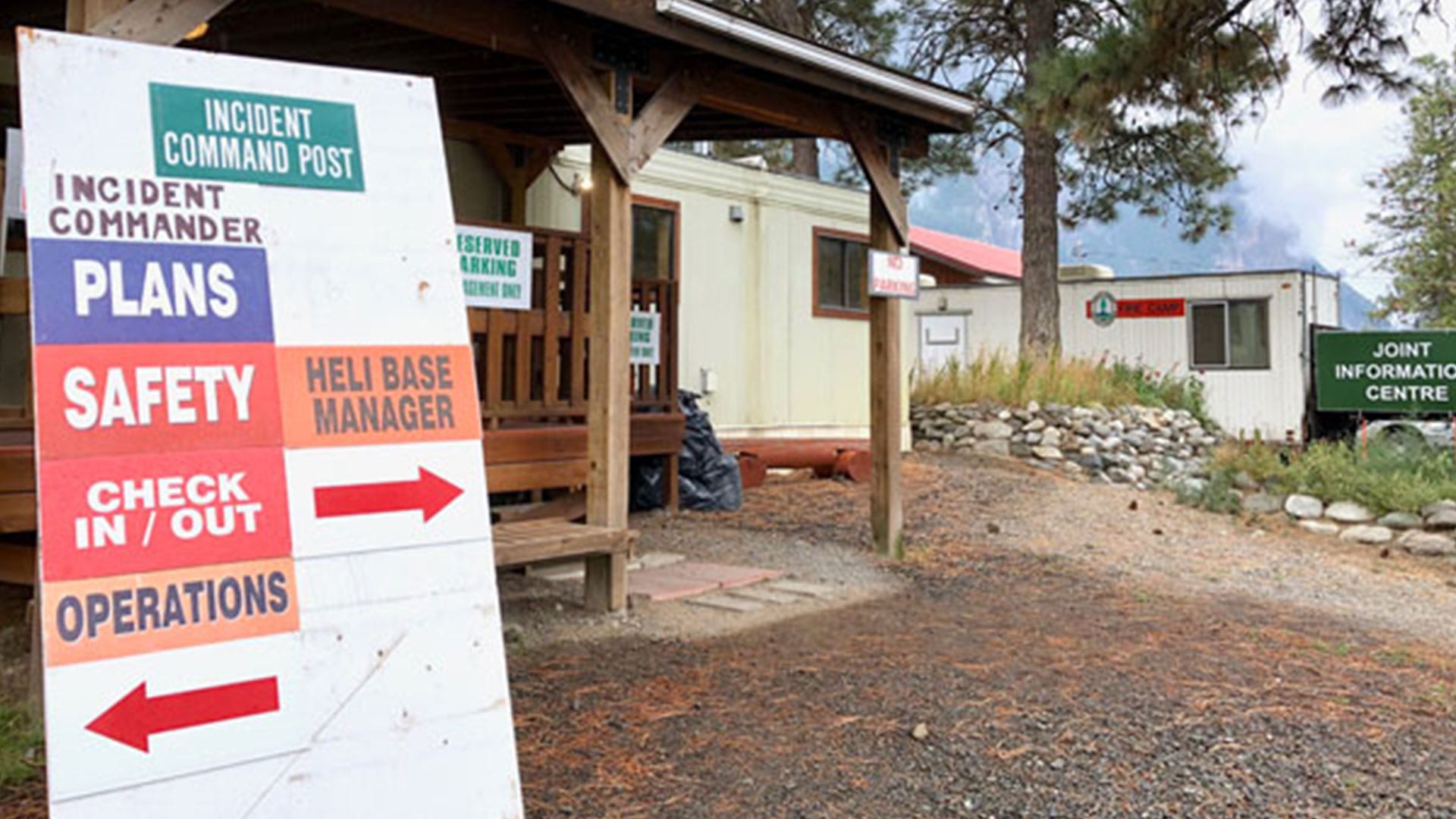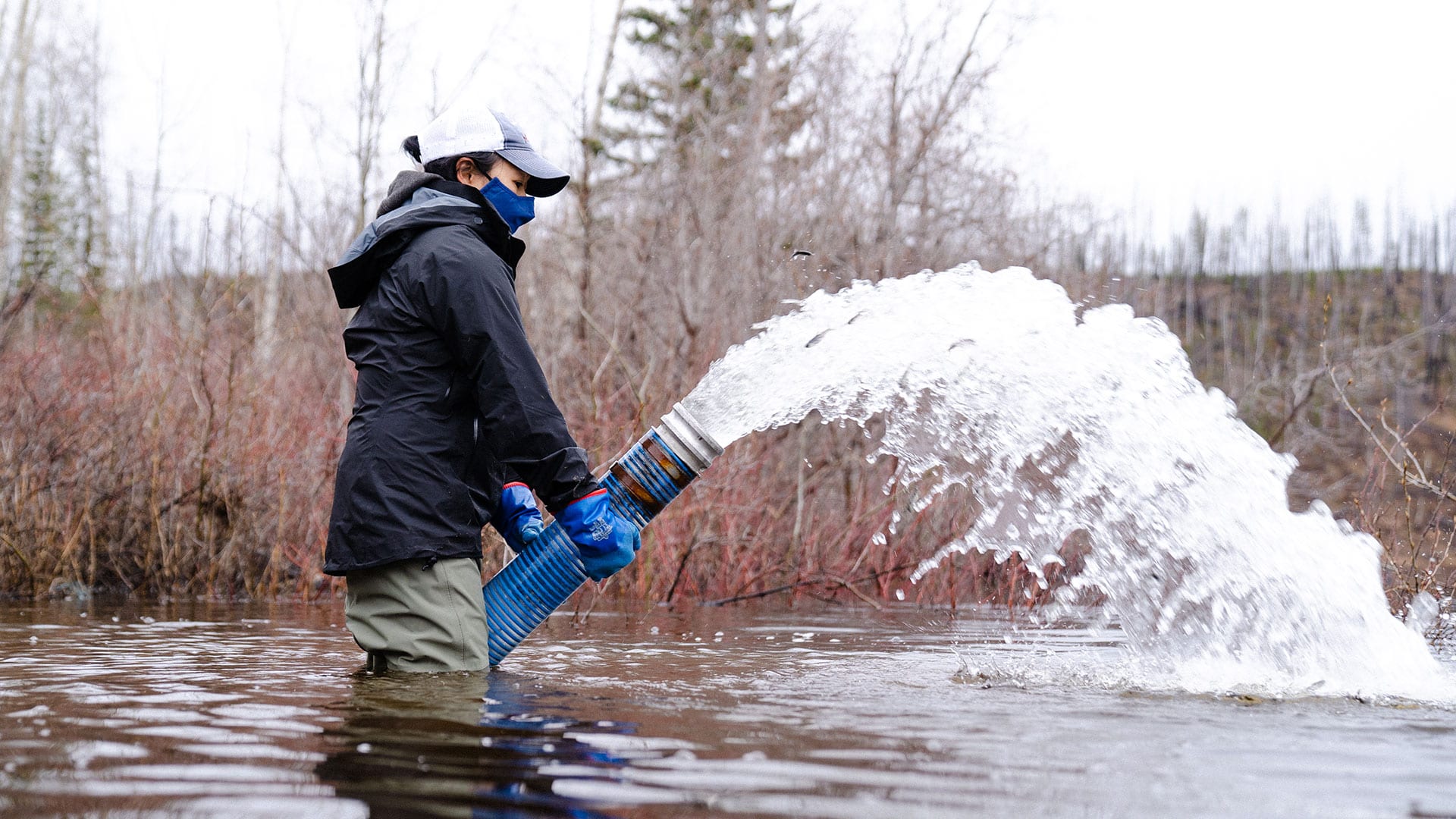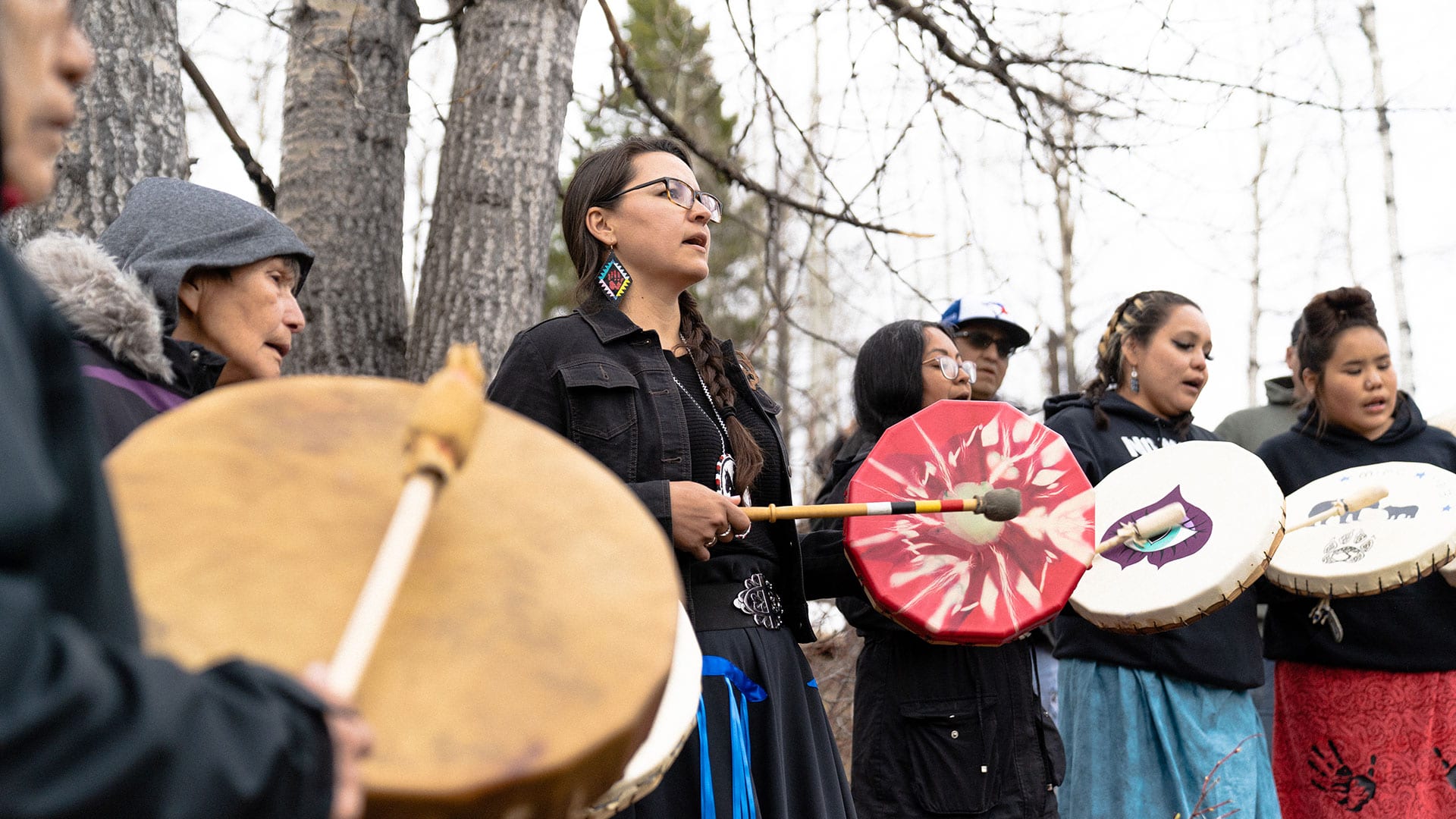First Nation partners and the Department of Fisheries and Oceans (DFO) will be releasing more than 101,000 Chinook fry into 12 different watersheds in the Upper Fraser as part of what is called the Big Bar Emergency Conservation Enhancement Program.
On April 27, Nazko First Nation held a blessing ceremony releasing 13,000 Chinook Salmon at Euchiniko River Bridge near Quesnel, B.C., about a four hour drive from the site of the Big Bar landslide.
In a phone interview with APTN News, Chief Leah Stump of the Nazko First Nation explained the event.
“We performed a ceremony for the safe release of the Chinook into the rivers,” she said. “We did smudging and drumming; we had a local community member who did a prayer song with his drum.”
In 2019, a landslide at a remote area called Big Bar blocked the Fraser River, the province’s largest river and a “vital” salmon migration route.

The Nazko First Nation is hopeful the salmon released can find their way back to their natural spawning grounds.
Stump said neighbouring nations’ community members joined them to watch the release.
“The communities up and down the river, not only Nazko have relied on the salmon for their necessity for their food for the winter, with the blockage it has stopped migrating salmon from coming up the river,” she said.
They are one of many nations along the Fraser River that partnered with DFO.
“The Chinook fry releases are a step towards supporting the long-term survival of vulnerable salmon populations and mark a significant milestone for the Big Bar landslide response as the enhancement efforts undertaken in 2020 come full circle,” said a statement from DFO.

DFO said this project was over a year in the making.
“Planning for these releases began in 2020 and included the collaboration of First Nations technical experts in the Upper Fraser, Upper Fraser Fisheries Conservation Alliance and DFO. First Nation partners are integral to the success of the enhancement program,” the statement said.
Chinook will continue to be released into the Upper Fraser River by truck and helicopter over the coming weeks.
“They will quickly imprint on the local creeks, streams and rivers, and spend the next 11 to 12 months in various freshwater habitats,” DFO said.
“In late April and early May 2022, they will enter the Fraser River estuary as yearling Chinook smolts. After an additional two to four years at sea, they will return to the Fraser River and migrate back to their natal streams – completing their life cycle.”

Stump said she’s glad there was action to help the salmon.
“I just think that the river we released them at, the Euchiniko River, has been a spawning ground for the Chinook since time immemorial, and our Chinook are almost extinct from the river,” she said. “I think it’s time that something has been done.”
With the lack of Chinook salmon in the rivers, she said Nazko members have turned to trout fishing in the lakes.
But she said they are missing out on passing down traditional harvesting knowledge to the younger generations.
“We are hopeful that the salmon will make it back to the ocean and back to their spawning grounds,” she said.









